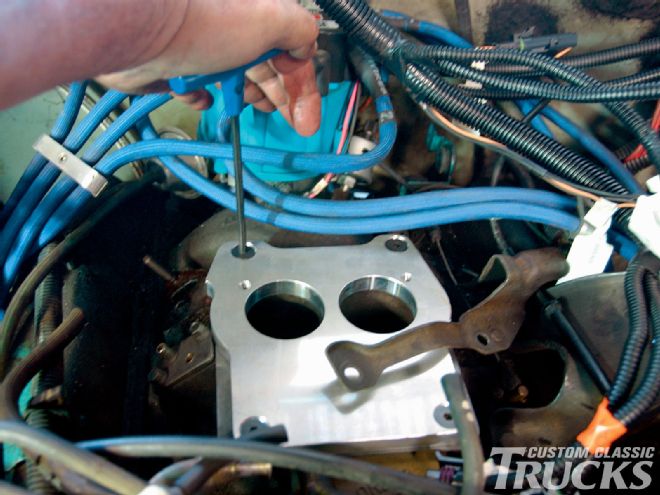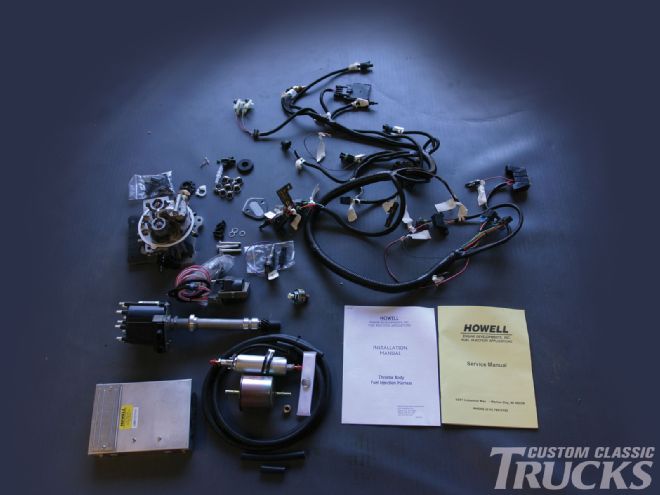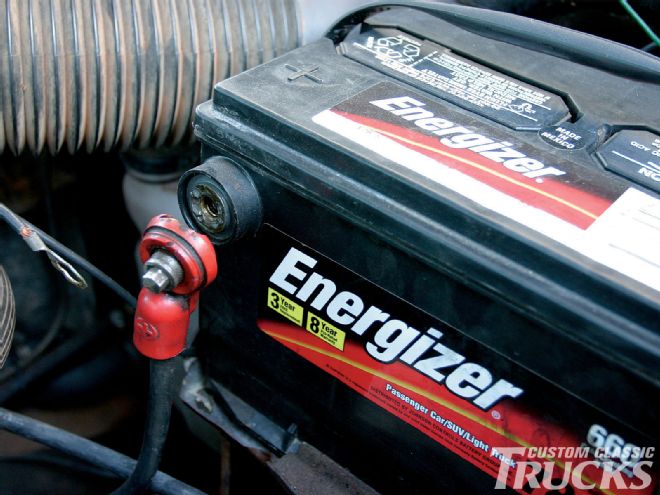
The fastest way to learn a lot about a person, or a vehicle, in a very short period of time is to take a long road trip with them. We'll skip past the human frailties one often discovers about their fellow man and move right along to talking about all of the things one will never really know about their truck until they get out on the road and let it roll. The testbed for a lot of my firsthand knowledge has been the '79 Chevy C10 Big 10 I drove on Rod & Custom magazine's farewell tour to its Americruise event.

It's no secret the two biggest technological contributions to fullsized trucks generally doubling their gas mileage and life expectancy has been the advent of overdrive automatic transmissions and electronic fuel injection. In the case of my '79 C10, or the Americruise truck as it has come to be known, I took care of the gearing situation by installing a Gearstar Performance 4L60E, but the stock Rochester four-barrel carburetor was left in place. There's nothing wrong with a good old-fashioned carburetor; they've served the automobile industry well for over 100 years now. Well, nothing except they cause a lot of sputtering and coughing until the engine warms up and the raw gasoline that pours down the cylinder walls dilutes the engine oil and impairs its ability to lubricate the engine. Couple this with the raw gas going out the exhaust without being burnt not only causes premature engine wear but beats the dickens out of getting good gas mileage.
The last straw for me putting up with a carbureted engine on a long road trip was when I rolled into Denver after spending the day driving in from Lincoln, Nebraska. My truck setup to run at 20 feet above sea level was having a real hard time running in the 5,281 feet of thin Colorado air. In the old days the guys running flathead V-8 Fords dealt with the problem by upping the compression with high-compression heads affectionately known as Denver heads. This took care of part of the problem. When subjected to higher altitudes all engines need to add one degree of advance to the timing for every 1,000 feet of altitude and the carburetor has to be re-jetted to lean it out to run at the right air/fuel ratio. I wasn't enjoying my stay in Denver enough to get out and manually re-time and re-jet my Chevy's 350, but I promised myself I wouldn't drive any truck at a high altitude again until I had fixed the problem. The '79's overall gas mileage wasn't awful on Americruise, but suffered anytime I had run the engine constantly below 2,000 rpm-which was a lot when I had to run in the pack with some of the old duffers at below the posted speed limit.
 The first step to any mechanical procedure that involves 12-volt electricity is to disconnect the battery.
The first step to any mechanical procedure that involves 12-volt electricity is to disconnect the battery.
The engineers at General Motors found the cure for all of the above mentioned problems by introducing electronic fuel injection, or TBI, at the tag end of the square-bodied C10's 15-year production run. For the average guy like me to retrofit a TBI setup to an earlier truck is an over-complicated nightmare. But thanks to the folks at Howell Engine Developments in Marine City, Michigan, there is a computer-controlled fuel injection kit that takes a lot of the guesswork out of the equation. I wasn't able to install Howell's TBI fuel injection system on the '79 because it isn't CARB approved for use in California. I did the next best thing and installed one on my almost identical '75 Chevy Big 10 C10, which is under the cutoff year for California's smog check program. Isn't it a bit ironic, a government bureaucracy impedes folks from "greening up" their truck's carbon footprint?